Seeking asylum, migrants report being turned back at — or possibly just past — U.S. border
President Trump’s order cracking down on asylum seekers at the southern border has been stayed by a federal judge, but a small group of determined migrants who made it through the border fence discovered that at least some Border Patrol agents appear to be enforcing it anyway.
On the afternoon of Dec. 1, about 10 women and children, a small part of one of the caravans that traveled hundreds of miles through Mexico from Honduras, crossed the border fence near its western end on the beach near San Diego. Their plan was to apply for asylum, which, by American and international law, anyone physically present in the U.S. is eligible to do.
But beyond the fence, separating them from the rest of the United States, was a further barbed-wire barrier, and armed Border Patrol agents who warned them that if they proceeded they would lose their right to claim asylum — and threatened to arrest them, presumably for child endangerment, if any children received even a scratch from the barbed wire.
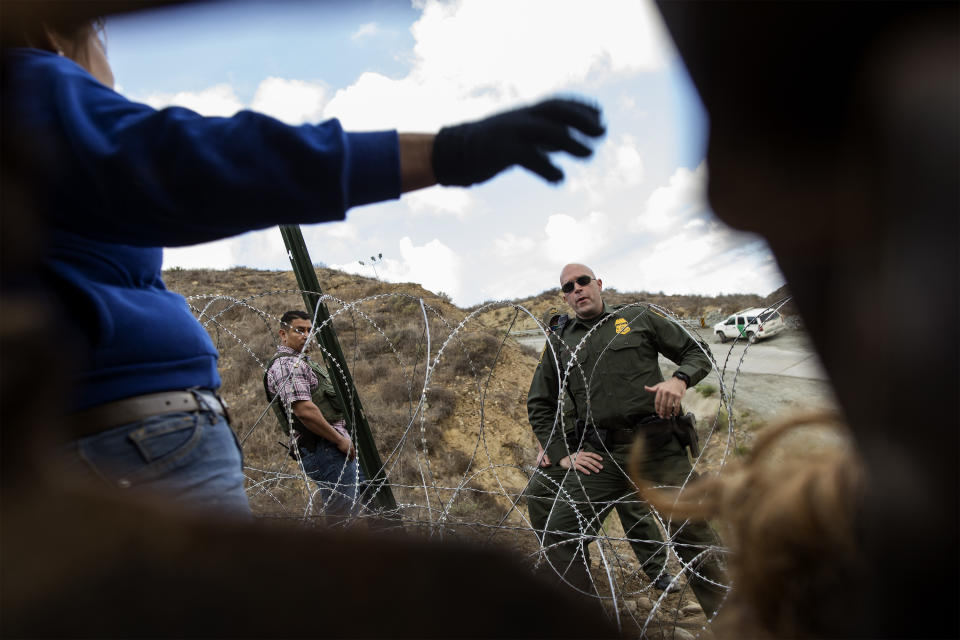
So they turned back. It isn’t clear whether the patch of ground they were standing on was, in fact, U.S. territory.
“We returned to Mexico because they told us to go back,” said Dariela, one of the mothers in the group. The encounter was captured on camera by photographer Fabio Bucciarelli and videographer Francesca Tosarelli. It appears to be one of the only documented cases of asylum seekers being turned back to Mexico by U.S. officials, pursuant to Trump’s Nov. 8 proclamation that required asylum seekers to present themselves at one of the 48 official ports of entry along the border, since a federal judge issued a restraining order blocking implementation of the proclamation. But the incident is in line with other reports from Tijuana and elsewhere of the various ways in which people are being prevented from legally seeking asylum in the United States.
Back on the southern side of the fence, Bucciarelli followed the group as they were transported by Mexican authorities to a new shelter where Tijuana officials have begun moving migrants after the stadium previously used to house them was closed for health reasons. There, he interviewed each of them about their experience at the border.
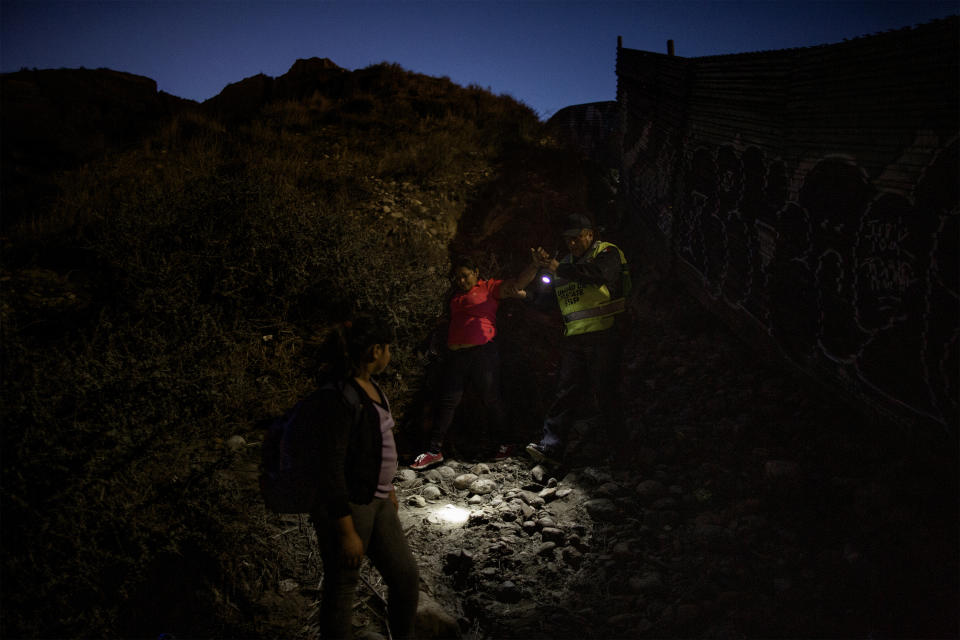
Dariela, 24, left Honduras with her 7-year-old son, Eric, in September to join the caravan of migrants embarking on the typically dangerous journey to the United States through Mexico. They arrived in Tijuana last month, and followed the recommended procedure of adding their names to a waitlist along with thousands of others also hoping to seek asylum in the United States. The wait time on the list was estimated at a month or longer, as Customs and Border Protection officials have placed strict limits on the number of refugees processed each day, citing capacity constraints.
Desperate in the face of this daunting prospect, Dariela and a few others from the caravan decided to take their chances on crossing the border illegally. Their plan, Dariela explained, was to turn themselves over to U.S. officials once they reached the other side and request asylum once in their custody — a legal practice that, in recent years, had become common, particularly among Central American asylum seekers.
Last month, ahead of the caravan’s arrival, Trump attempted to crack down on that practice by signing a proclamation that essentially banned access to asylum for anyone who crosses the border outside official ports of entry. The proclamation was immediately challenged in court by immigration rights advocates, and a little over two weeks later, U.S. District Court Judge Jon S. Tigar, of San Francisco’s Ninth Circuit, issued a temporary restraining order prohibiting the administration from implementing its new asylum restrictions, pending further legal proceedings.
“The law is very clear that individuals can apply for asylum whether they enter at a port of entry or between ports of entry,” said Omar Jadwat, director of the ACLU Immigrants’ Rights Project, which is pursuing the lawsuit against the policy, along with the Southern Poverty Law Center and Center for Constitutional Rights.
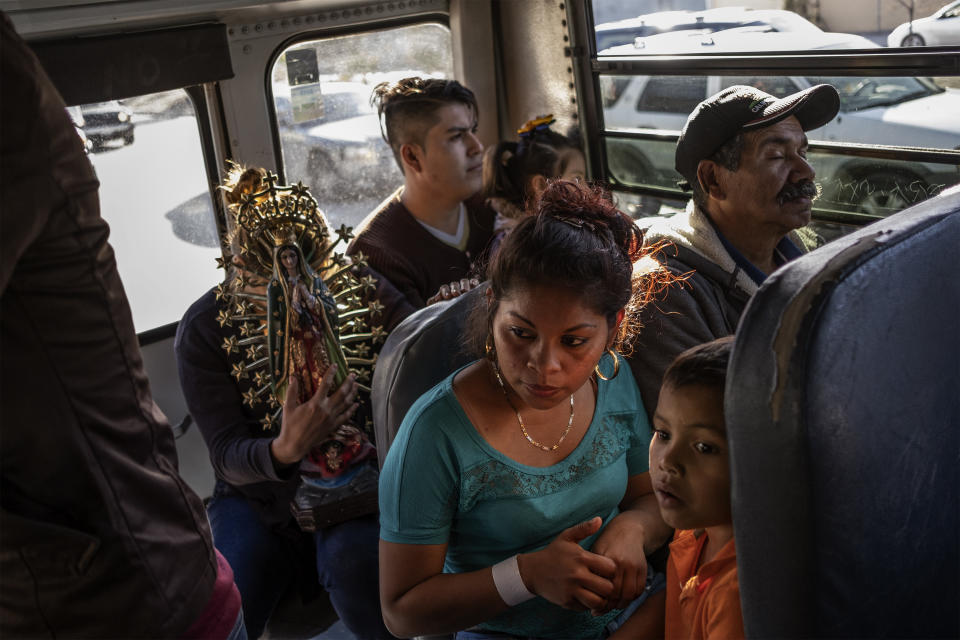
However, after making it through a hole in the fence that separates Tijuana from San Diego, Dariela, Eric and the others found themselves sandwiched between the northern facing side of the border fence and coils of concertina wire. How long that second barrier has been in place is unclear, although it is believed to be part of the recent border fortifications undertaken by the military, ordered by Trump in anticipation of the arrival of the caravans, which he characterized as “an invasion.”
The women were undeterred.
“I was set on passing the wire fence,” said Mirna, another one of the mothers, describing how she planned to guide her 10-year-old daughter carefully through openings in the wire that had apparently been made by earlier migrants.
But the group was confronted by U.S. Border Patrol agents who told them to turn around and go back to Mexico.
“If you cross this wire fence, and these kids get injured, we’re going to put you in jail,” said Mirna, recounting what the border agents told them. “And that’s going to make things worse for you.”
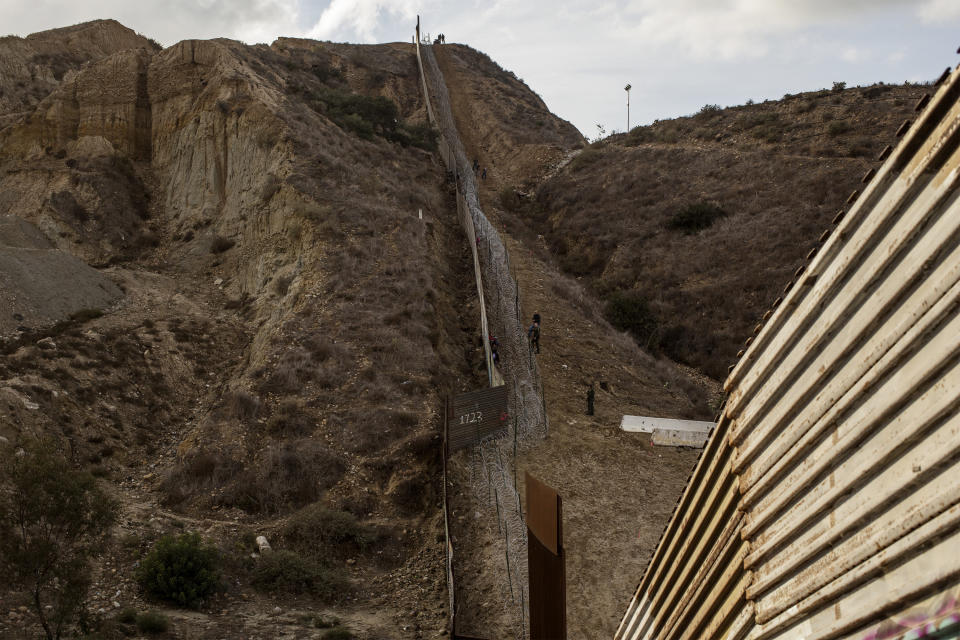
In separate interviews, at least three of the women independently recalled similar threats of arrest if any of the children were injured or even scratched. Like Dariela, they each also recalled being told that if they proceeded to cross from this point, they would be ineligible for asylum in the U.S.
“They scared us, saying they weren’t going to give us asylum. They were going to deport us,” said Xinia, a 19-year-old from Honduras traveling with her 4-year-old son, Kevin.
“My dream is to be there in the United States, and I was happy when I stepped foot on U.S. soil,” said Mirna. “But they didn’t give us the opportunity. They sent us back again.”
It’s not entirely clear if the particular sliver of land between the wall and wire where Mirna and the others wound up is technically considered U.S. soil.
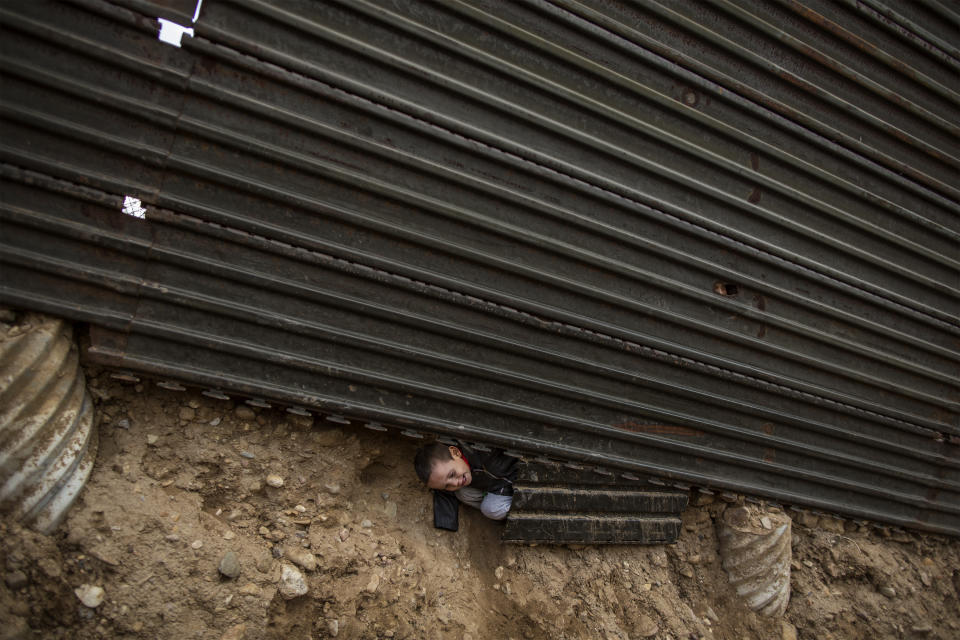
“If an individual who entered unlawfully is encountered in the United States by Border Patrol agents, they are arrested and processed according to current law,” a Customs and Border Protection (CBP) spokesman said in a statement to Yahoo News. “If they are encountered south of the border (through the bollards for example, having not yet made entry) and request asylum, they are encouraged to seek asylum through a lawful port of entry.”
“There are many instances of aliens fleeing from Border Patrol agents after they enter, and they sometimes flee into Mexico,” the spokesperson continued. “This is referred to as a ‘turn back,’ but agents will not instruct an alien to turn back to Mexico.”
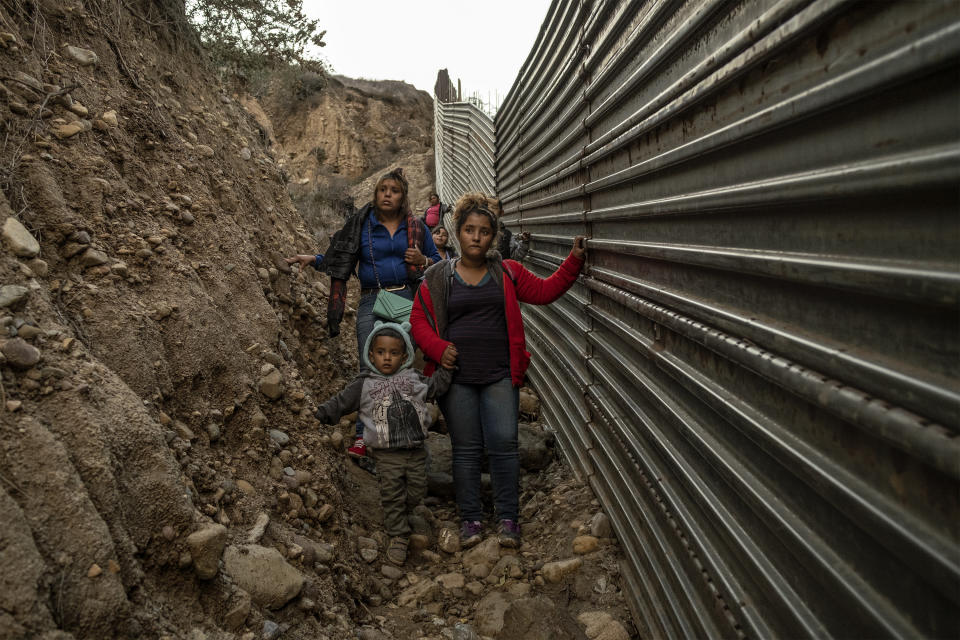
Asked to comment on the encounter described by this particular group of migrants, a spokesperson for CBP in San Diego confirmed that the agency was investigating the specific incident but did not respond to Yahoo News before this article was posted.
The ACLU’s Jadwat argues that the Border Patrol agents’ behavior described by the women in this situation is problematic regardless of what side of the international line they were on at the time.
“It’s just wrong for border agents to be telling people that they can’t apply for asylum or to be intimidating them out of applying for asylum once they reach the United States,” said Jadwat, calling the accounts “very disturbing.”
“What’s being reported in this case is directly contrary to what the law provides,” he said. “It’s critical for the Border Patrol to make sure that its agents are complying with the law and not either intimidating people out of asylum or flatly and incorrectly telling them that they cannot apply.”
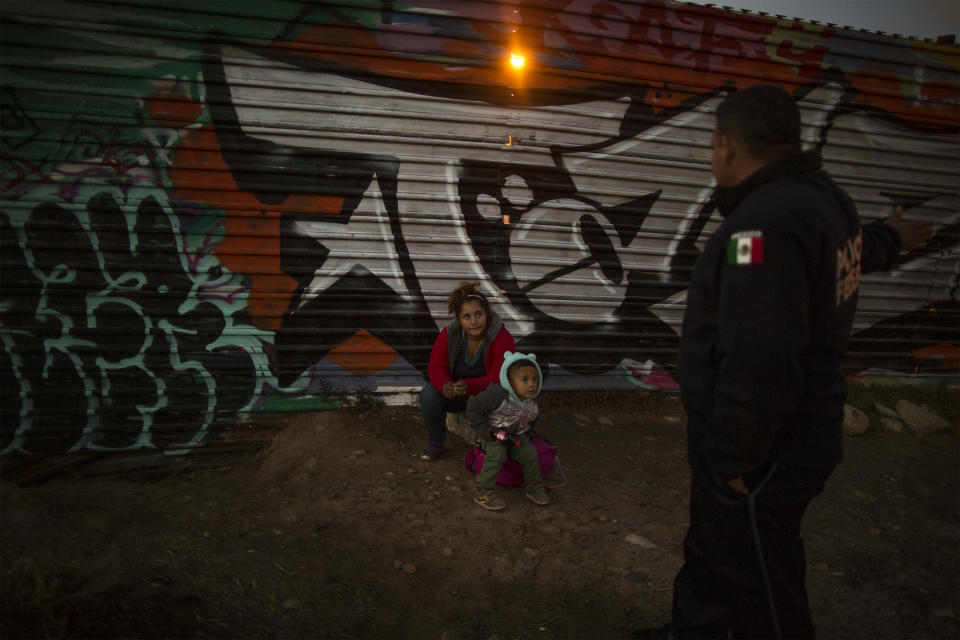
In a statement announcing the release of the latest border apprehension numbers Thursday evening, Department of Homeland Security spokeswoman Katie Waldman criticized the order by Judge Tigar blocking the implementation of Trump’s policy to ban access to asylum between ports of entry on the southwest border.
“To address the obvious crisis at our border, the President has recently deployed the military and signed a new measure that, in conjunction with a joint DOJ regulation, makes illegal border crossers ineligible for asylum,” Waldman stated, declaring that “Bad decisions from the Ninth Circuit are directly responsible for the more than 25,000 family units who violated our national sovereignty and are effectively immune to consequences for their illegal actions.”
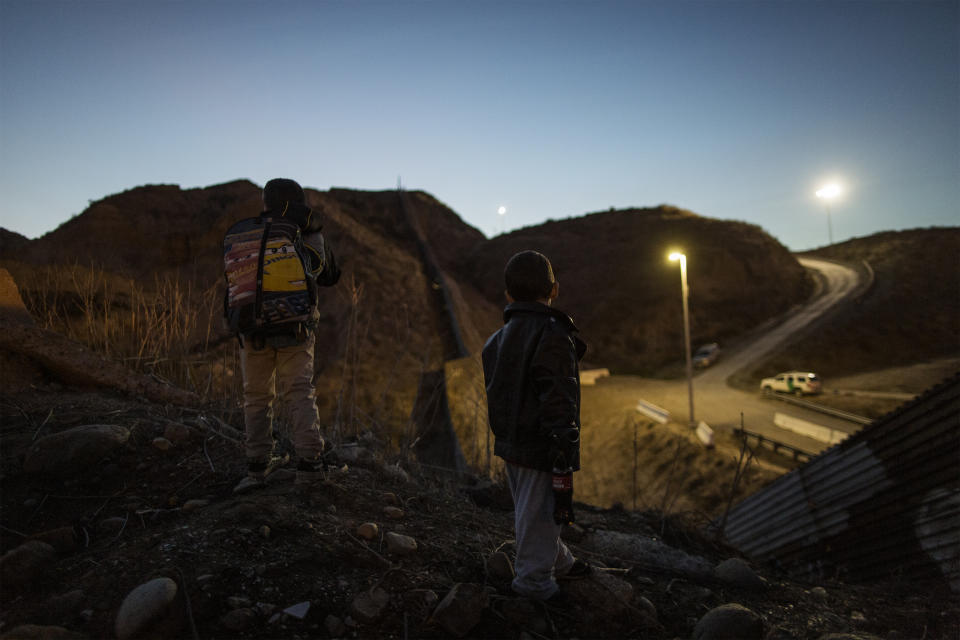
According to the numbers released Thursday, during the month of November, a total of 51,856 undocumented migrants were apprehended by Border Patrol agents between ports of entry along the southwest border, 25,172 of whom were caught crossing the border with a family member. The numbers are significantly higher than those reported during the same period of time last year, when a total of 29,085 people were apprehended along the southwest border. However, many immigration experts and advocates have taken issue with the administration’s characterization of the current situation at the border as a “crisis,” arguing that the apprehension numbers reported in fiscal year 2017 were unusually low, with attempted illegal entries dropping significantly in the wake of the November 2016 election and the first few months of Trump’s presidency. Compared with the numbers reported during November 2016, for example, when a total of 47,211 people were apprehended, the disparity is much less shocking.
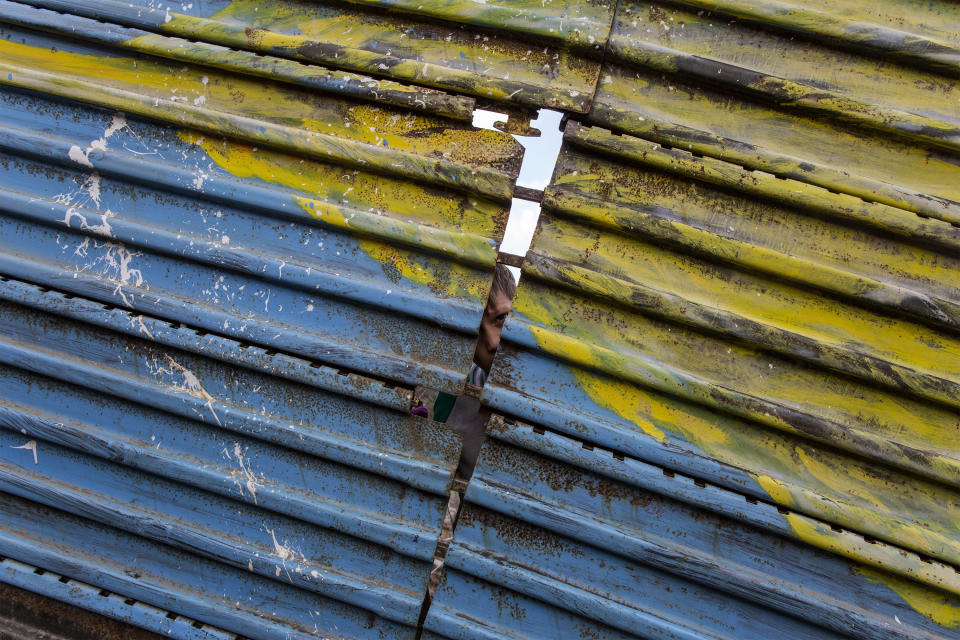
Jadwat said that he and his colleagues on the border plan to further investigate this incident and others like it in response to what they call a concerted and unlawful effort by the Trump administration to prevent people from legally pursuing asylum in the United States. The wait system for asylum seekers in Tijuana predates the arrival of the caravan, the CBP spokesperson noted. But U.S. and Mexican officials have recently begun collaborating to implement similar processes at various other points along the southwest border, including in El Paso.
“It’s just a fundamentally upside-down approach to this whole situation,” said Jadwat, arguing that such measures suggest that “the administration has no real interest … in actually accepting and processing asylum applications in an orderly fashion and instead is doing everything it can to exacerbate the problems that people are facing on the border so they can claim there is a huge crisis there.”
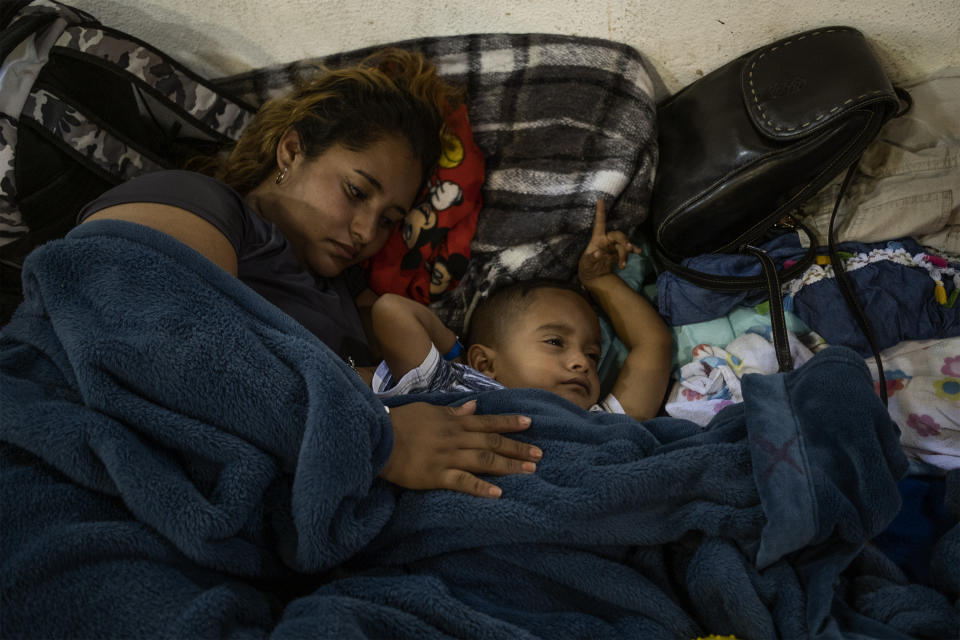
The experience of this one particular group seems to illustrate at least one predicted result of the increased restrictions on asylum seekers at the official ports of entry. After spending time with the women back in Tijuana, Bucciarelli, the photographer, predicted that they would not be there long before making another attempt to cross the border — driven by a desperate desire for refuge in the United States and a growing fear that they could be deported by Mexico back to Honduras.
“I can’t go back,” Mirna said at the migrant shelter in Tijuana, tearing up as she reflected on the rampant violence that has consumed much of her country — and her own family — over the past few years. “They took away my life, my mom, my son… That’s why I cannot go back to Honduras.”
Reporting from Tijuana: Fabio Bucciarelli and Francesca Tosarelli
Read more from Yahoo News:
Cohen is a ‘serial liar,’ says former Trump aide Lewandowski
Take a number: Migrants, blocked at the border, wait their turn to apply for asylum
An American killing: Why did the U.S. Park Police fatally shoot Bijan Ghaisar?
I called George Bush a ‘wimp’ on the cover of Newsweek. Why I was wrong.
Photos: Texas funeral held for former President George H.W. Bush



